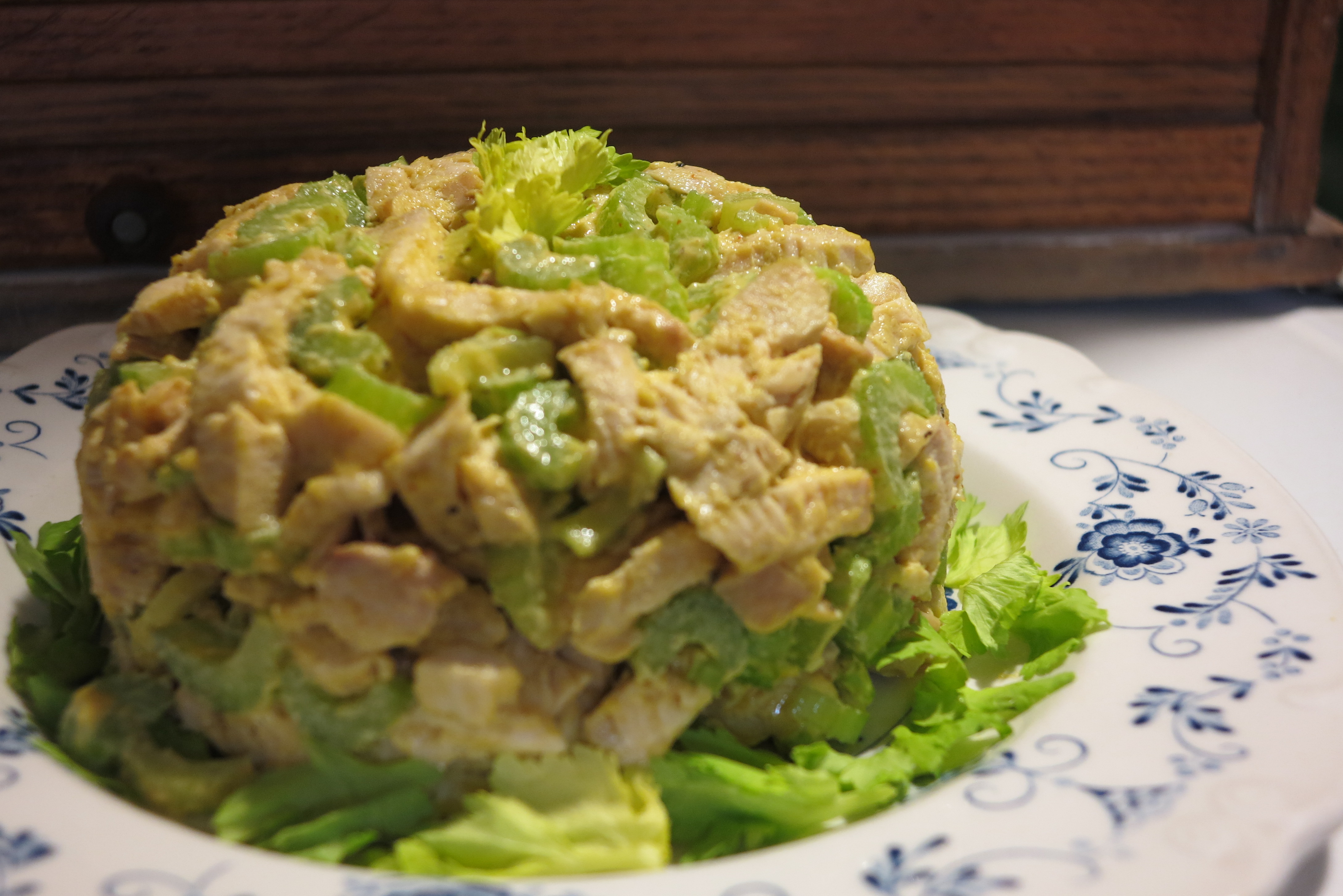 Chicken Salad – made by black man Williams Oct 3, 1850 for twelve gentlemen
Chicken Salad – made by black man Williams Oct 3, 1850 for twelve gentlemen
Heads of celery
2 chickens boiled using only the white meat
6 boiled eggs using the yolks only
1 raw yolk of egg
Sweet oil – a little vinegar
Mustard mixed – two thirds of a cup
Probably about a tea cup of sweet oil
Mash the boiled yolks then add the mustard then the oil then the vinegar. Mix well together with a spoon.
Probably better to mix the mustard and oil first then the eggs
Chicken chopped fine with chopping knife celery cut about as fine as for common eating but not chopped – Mix together and place in the dish which is to be sent to the table – over that pour the dressing Williams garnished it with celery leaves – perhaps he would have taken parsley if it had been here
Antebellum cooks’ frustrations with the dressing for chicken salad peek through many of the period recipes, including Mrs. Flint’s. She transcribed Williams’s recipe in ink except for the line about mixing “the mustard and oil first,” which she inserted in pencil at a later point–likely after one of her cooks had tried the recipe and had been met with a curled, oily mess. Of course the advice in that line is worse than unhelpful. The real trick to smooth, fully emulsified dressing is to beat the oil very gradually into the egg yolks and mustard, especially at first, just as in making ordinary mayonnaise. I have adapted the recipe in a half batch, without the raw egg yolk, which is unnecessary given good technique. Mrs. Flint does not note how many heads of celery are needed. I have followed the rule implied in other period recipes: two parts chicken to one of celery. “Sweet oil” is olive oil. “Mustard mixed” is dry mustard mixed with water; assuming that the “cup” is a teacup, the recipe is calling for 2/3 cup of this pungent compound. Many other recipes of the day specify “made mustard” (prepared mustard), and less of it, and I’m with them. Cookbook author Catharine Beecher says to chop everything the size of peas, but I say to hell with that. This salad is quite delicious and so a half batch may serve only four gentlemen or gentlewomen.
Set a 1-quart bowl on a wet cloth or rubber mat to steady it. Force 3 hard-boiled egg yolks through a fine sieve into the bowl. Using miniature whisk (or, if you don’t have one, a table fork), thoroughly mix in 3 tablespoons Dijon mustard and 2 teaspoons wine vinegar. Gradually beat in 1/3 cup olive oil, adding the first 1 1/2 tablespoons (or so) by droplets, the rest by half teaspoonfuls. Taste and adjust the seasoning. The dressing will probably need some salt, and you may want to add more mustard or vinegar, and perhaps a little cayenne pepper too.
Cut 1 pound cooked boneless, skinless chicken breast in slices 1/4 inch thick and then cut the slices top to bottom in 1/4-inch strips. You should have about 3 cups. Mix the chicken with 1 1/2 cups celery cut in 1/4-inch slices. Combine the chicken and celery and fold in the dressing. Pack the salad into a 1-quart bowl or mold, cover, and refrigerate for at least an hour or two to blend the flavors. Serve the salad in the bowl or turn it out onto a serving plate. Garnish with celery leaves or parsley.
